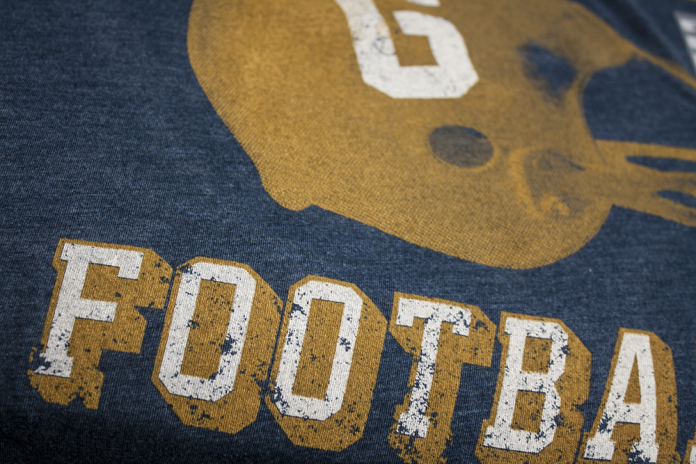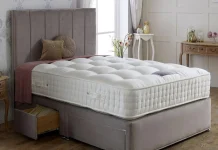Knowing the methods to screen print on an underbase is crucial for screen printers to master their craft. Anyone that wants a vivid, bright, well-composed print will need to lay down a solid base for their work. There are some crucial steps that are best to follow in order to achieve the best results when screenprinting on particularly dense underbased clothing.
Mesh Count Preparations
When it comes to screenprinting on dense underbased clothing all the little details matter. Emulsion, mesh count, and coating techniques all matter for putting together a beautiful piece of apparel. From a simple basic shirt to a dense sweatshirt from Bella + Canvas, they all require attention to detail to get done right.
If you start with a basic white underbase you will need a screen with a mesh count of 110-160, though this number can vary greatly. The type of material you are printing on, the type of garment, the inks you will be using, and much more will determine the mesh count you should use.
For thicker material it is best to expect to use higher mesh counts, but mesh counts will still vary depending on the little clothing’s details.
Once you have your screen set up, it will need to be coated. The best method used to coat the screen will vary depending on set-up and print. While you may start with using the round side of a scoop coater to coat each side, it is easy enough to alter your methods to see what works best.
Making a Choice on White Ink
There are a few steps involved with picking what white ink you will be using for your setup. The best place to start is knowing what kind of ink you will be using for the print. Plastisol, water-based, and others are all options, but you will have to settle on one to get started.
Picking a white ink is totally up to your preference, but there are some reasons people make different choices. Not all white inks are equally flattering, so it’s good to shop around for options. Some options will also be out of the price range of some users, so cheaper inks might have to be used in that case.
A tip for when you do get your hands on your white ink, don’t add any reducers. A common mistake a lot of beginners make is adding a reducer to their white ink since it is thick and makes it more difficult to print. However, adding a reducer does not actually help.
What adding a reducer does is make the ink less opaque and weakened its ability to matte down the necessary fibers. Instead of going with a reducer, a better suggestion would be to make sure you have modulated the ink well before printing.
Set up for Off-Contact
In the simplest terms, off-contact is the distance between the back of the screen and the print surface when it is down in the print position. There are a few reasons being precise with the off-contact is an immensely important part of the process.
If the contact ends up being too high, you will run into issues such as blowouts, fibrillation, stencils drags, or even worse. On the other hand, if the off-contact is too low it could result in you being unable to clear the screen and you will lift most of the ink back up.
That raises the question of where the off-contact be located. Taking screen tension into account, the off-contact should usually be 1/8 to 1/16 of an inch for t-shirts. However, for thicker garments, you will want to double that measurement.
It’s best to experiment to discover what is the right height for your operation. The overall goal is to get the screen as low as it can go while still being able to snap it back up. You want it low, but you don’t want it stuck.
Using a Squeegee
The simplest advice to give here is that you do not want to push. Pulling on a squeegee gives better control and lets more ink laid down.
When it is time to print the first step is to flood the screen. Pull the squeegee with a consistent and controlled speed to maintain constant pressure. Finding the correct pressure is something that might take multiple attempts.
Try not to use too much or too little pressure when possible. If too much pressure is used not only will you tire out quickly, but it will lead to more direct issues like blowing out the image or shoving the ink through the shirt. Using too little pressure means that the ink won’t even clear through the screen.
The Flashing Process
Multiple factors determine a good flash such as time, how fast you are printing, and the flash dryer’s height. The flash height is the one that you want to keep your eye on the most because it determines how fast the ink is hit by the heat. If the flash ends up too high the process of the ink properly gelling will take much longer and possibly cause fibrillation.
If you were doing a regular t-shirt the flash should be set about 1.5-2 inches away from the surface of the shirt. However, for thicker garments, this is doubled.
The garments being used should be underneath the flash for a short time. If it stays under for too long the flash can cure the ink, which will not allow the top colors to adhere correctly. Flashing should only take a few seconds.
One big tip to keep in mind is that you do not want to print-flash-print with a white underbase. This doesn’t just make the print thicker, but you can run into other issues like improper adhesion with other colors, curing problems, or even worse.
Overall, there are plenty of steps to take to make sure the screenprinting process goes smoothly, but it is also a lot of trial and error. Don’t be dissuaded if you don’t get a perfect piece of fashion for the current industry the first time. Just keep at it, and test little adjustments where they seem right in order to find the method that works best for you.








